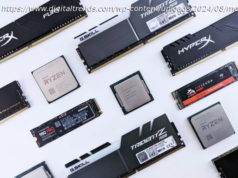OnePlus’ newest flagship — the OnePlus 7 Pro — is unsurprisingly its most capable yet. It ships alongside new wireless earbuds.
If you’ve shopped for an Android phone within the past six years, chances are you’ve come across OnePlus. The Shenzhen, China-based phone maker — the brainchild of former Oppo Electronics CEO Pete Lau and Carl Pei — rose to prominence because of its commitment to premium components at prices that undercut the competition. OnePlus’ execution hasn’t always been flawless — limited stock and an unintuitive ordering experience soured early launches — but it never compromised on the asking price, even as the cost of flagships from rivals Samsung, Huawei, LG, Sony, and others crept slowly upward.
Since the debut of the OnePlus 2, OnePlus has stuck to a twice-a-year release cycle. In the spring, it announces a phone with substantial hardware and software upgrades over the previous generation, and in the fall it releases a refreshed variant of this phone with subtler improvements. This spring is no different, save one thing: OnePlus revealed two flagship devices instead of one.
The OnePlus 7 and OnePlus 7 Pro were made official today at an event in New York City, but only the 7 Pro will be available stateside. Its headlining features include a display with a 90Hz refresh rate, upgraded fast charging, and a telephoto lens — and they don’t come cheap. At $669, the 7 Pro’s sticker price is far higher than that of previous OnePlus devices.
The OnePlus 7 Pro’s edge-to-edge waterproof design is very “of the moment,” and that’s not a knock against it. In fact, the execution here is polished to the point of perfection.
The protective screen Gorilla Glass 5 curves around the lip of the aluminum frame, concealing the seam where the two meet. Much like the displays on Samsung’s Galaxy S10 series and Huawei’s P30 Pro, the OnePlus 7 Pro’s is rounded at each corner along the contours of the frame and slightly tapered at either edge, slightly curving toward the rear cover.
Unlike screens on most high-end handsets on the market, the 7 Pro’s doesn’t house a front-facing camera notch or pinhole cutout. Instead, taking a cue from the Vivo Nex S and Oppo’s Find X, a retractable plastic strip extends from the top of the OnePlus 7 Pro whenever an app calls Android’s camera API. This clever mechanism — which OnePlus says has been tested over 300,000 times and retracts in a “fraction of a second” when the phone’s gyroscope and accelerometer detect a fall — enabled OnePlus to shrink the 7 Pro’s top and bottom bezels further than ever before. They measure millimeters in length — far narrower than those of Google’s Pixel 3, LG’s G8, and the earlier P30 Pro — which forced OnePlus to stick to a bottom-firing speaker design as opposed to a front-firing one. You’ll find the speaker next to the USB-C port.
Unfortunately for wired headphone diehards, OnePlus didn’t see fit to include a 3.5mm jack in the 7 Pro. It did, however, make room for its signature alert switch on the right side of the OnePlus 7 Pro adjacent to the volume rocker, opposite the sleep/wake key on the left. As on the OnePlus 6T, the switch toggles between Ring Mode, which enables all alarms and notification pings; Silent Mode, which mutes all sounds; and the self-explanatory Vibrate Mode.
Flip the OnePlus 7 Pro around, and you’ll see a triple-sensor camera module — a first for OnePlus — protruding from the rear above an embossed OnePlus logo and accompanied by a dual LED flash. It comprises an 8-megapixel telephoto sensor, a 16-megapixel ultra-wide sensor, and a 48-megapixel primary camera, all of which we’ll dig into in a bit.
OnePlus says that the OnePlus 7 Pro’s Fluid AMOLED display, which measures 6.67 inches diagonally, is the best it’s ever sourced, and there’s some merit to its claim. In a test prior to today’s launch, DisplayMate, a firm which develops and uses calibration and optimization software to test consumer electronics displays, awarded the OnePlus 7 Pro’s the highest A+ grade. That’s on par with the Samsung Galaxy S10, which recently received Display Mate’s all-time top rating.
Suffice it to say that said display renders frames crisply thanks to its 4.49 million pixels (Quad HD+, 19.5:9 aspect ratio, 3,200 vertical pixels x 1,800 horizontal pixels, 516 pixels per inch), a total that’s more than double the number of pixels in the OnePlus 6T’s screen (2280 x 1080). Perhaps more importantly, it features a 90Hz refresh rate (up from 60Hz), which means that the display refreshes 90 times a second. That might fall short of the Razer Phone’s 120Hz, but in practice, it should make app interactions smoother, supported games quicker to respond to touch, and scrolling and navigation as smooth as butter.
Worth noting is the OnePlus 7 Pro’s support for high dynamic range (HDR) videos, TV shows, and movies, which boast improved brightness, wider color gamuts, and better contrast than their non-HDR counterparts. The flavor here is HRD10 and HDR10+, both of which cover 100% of DCI-P3 and Rec 2020 color spaces — the standard for digital cinema projectors and most 4K Ultra HD televisions and computer monitors — for a total of 1.






